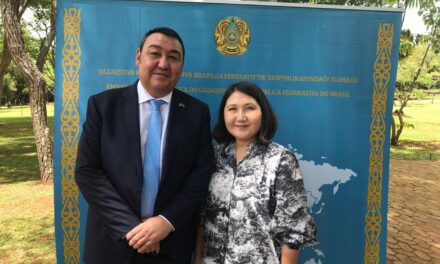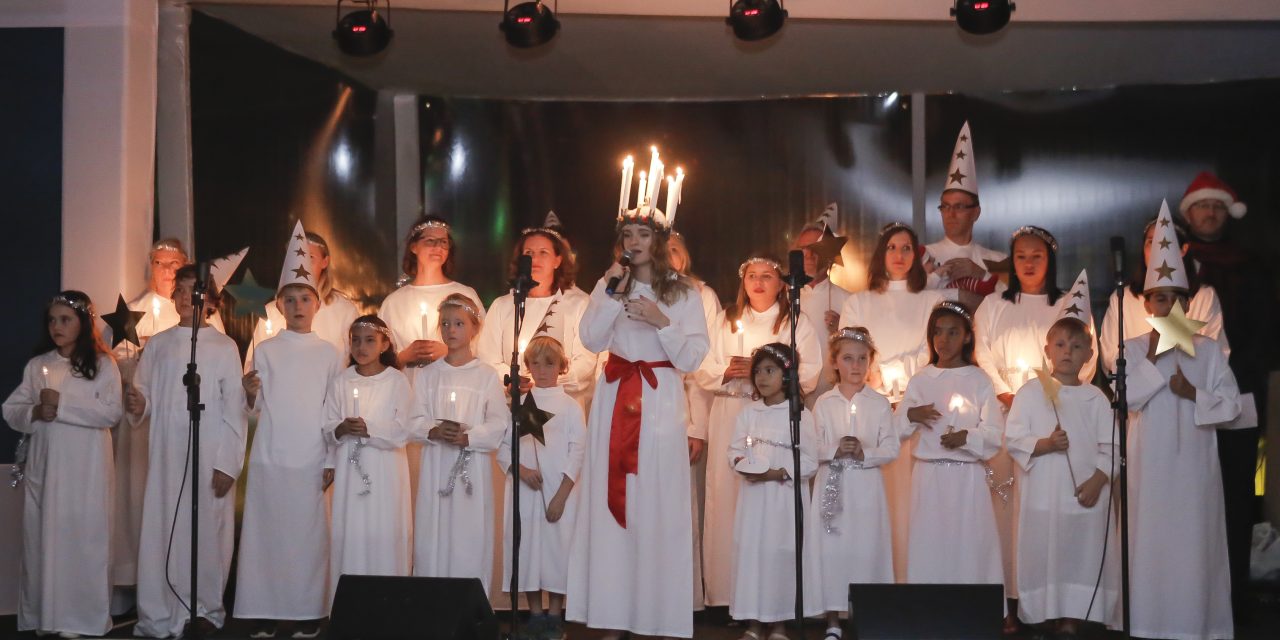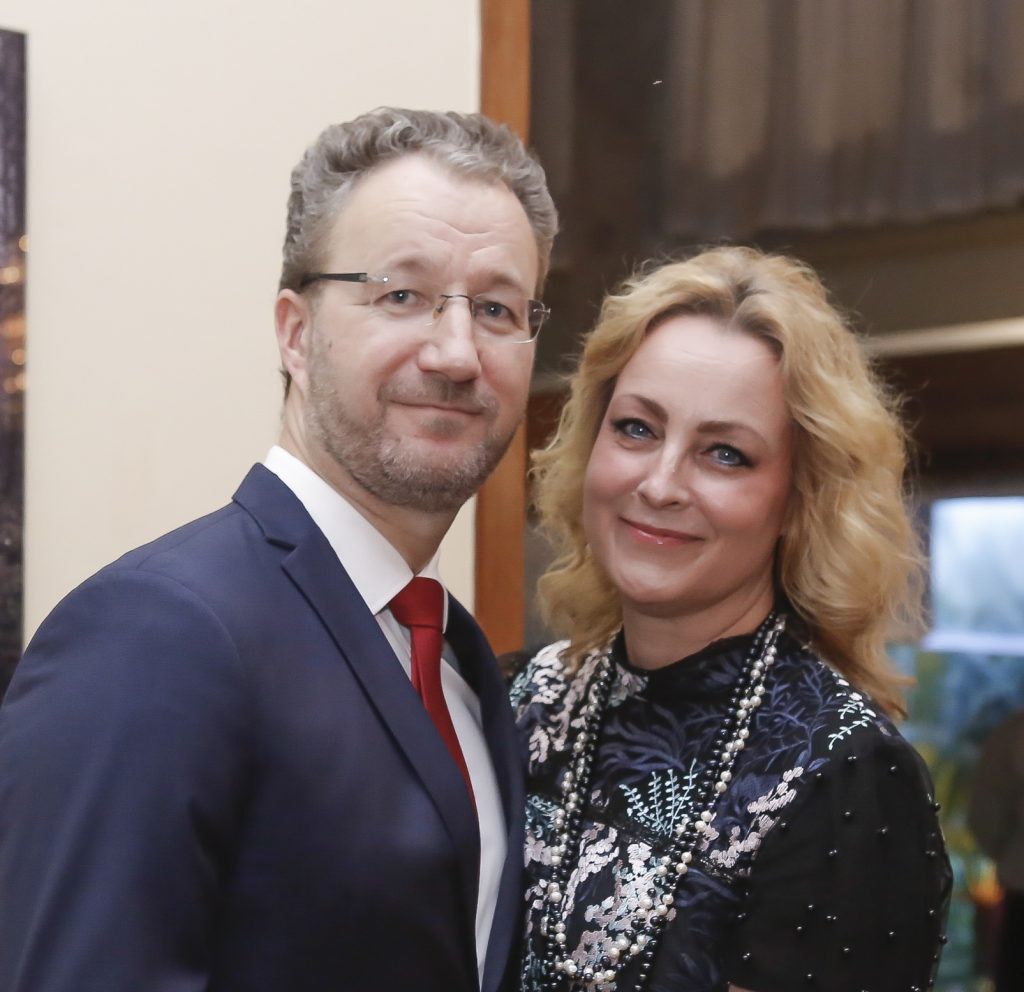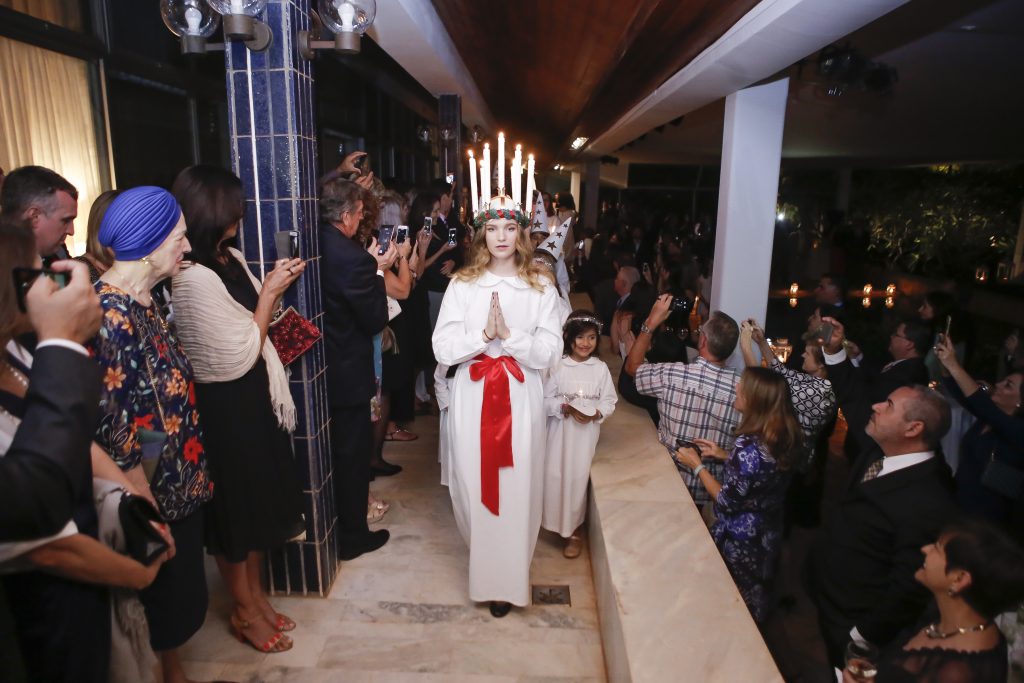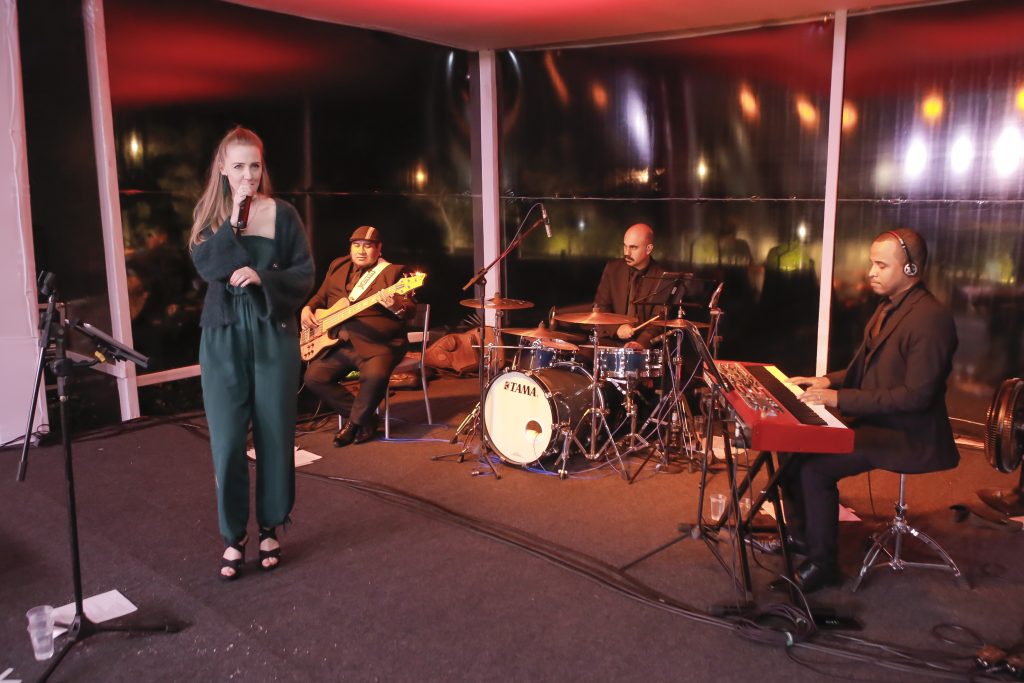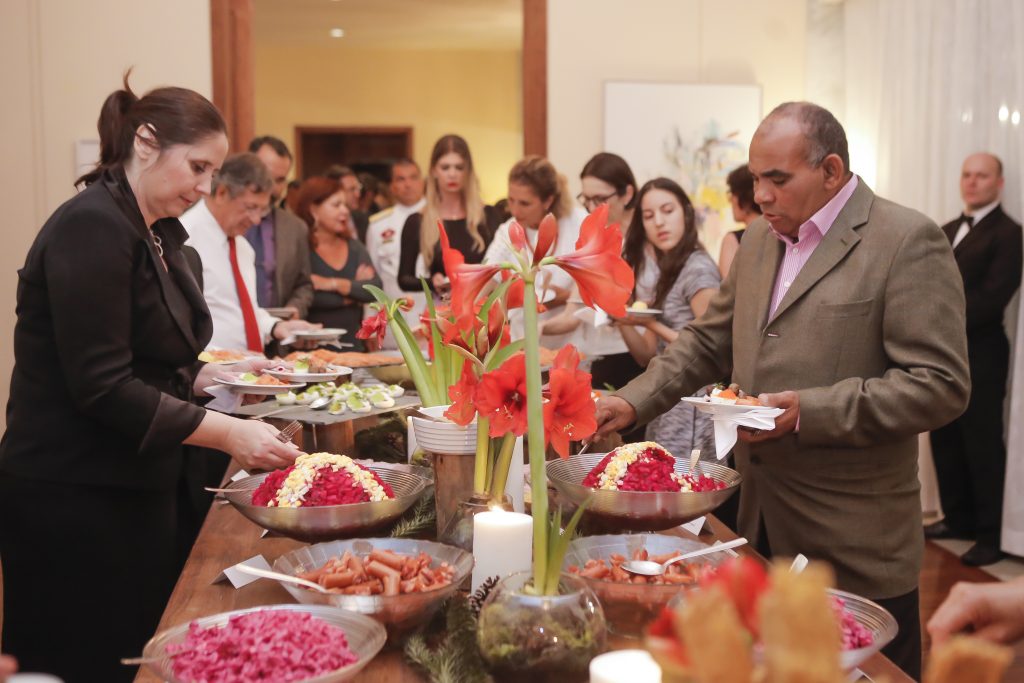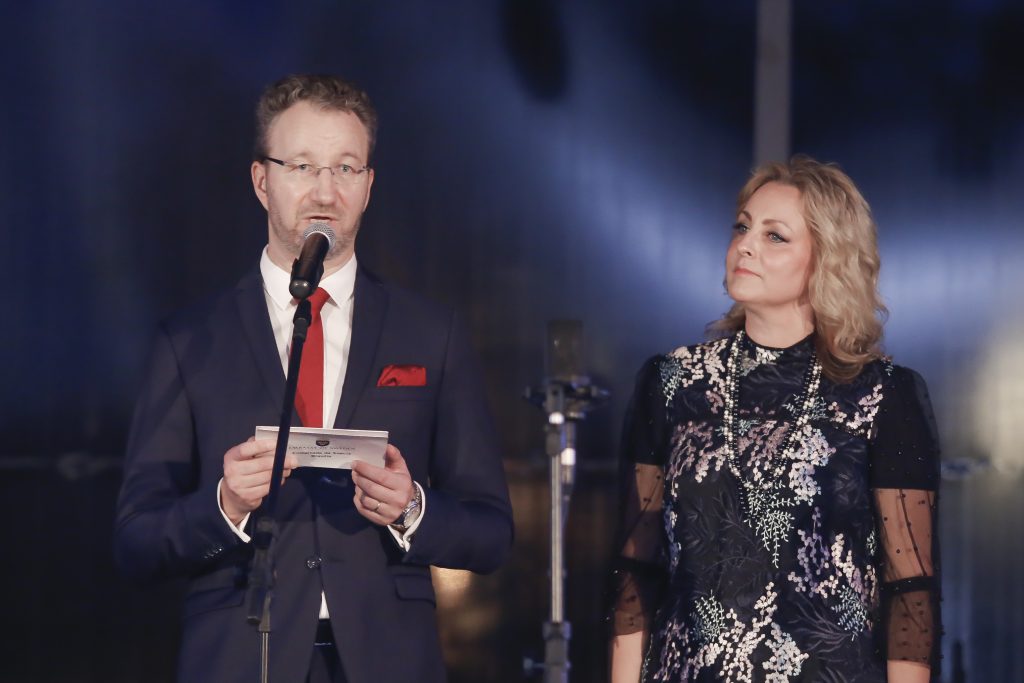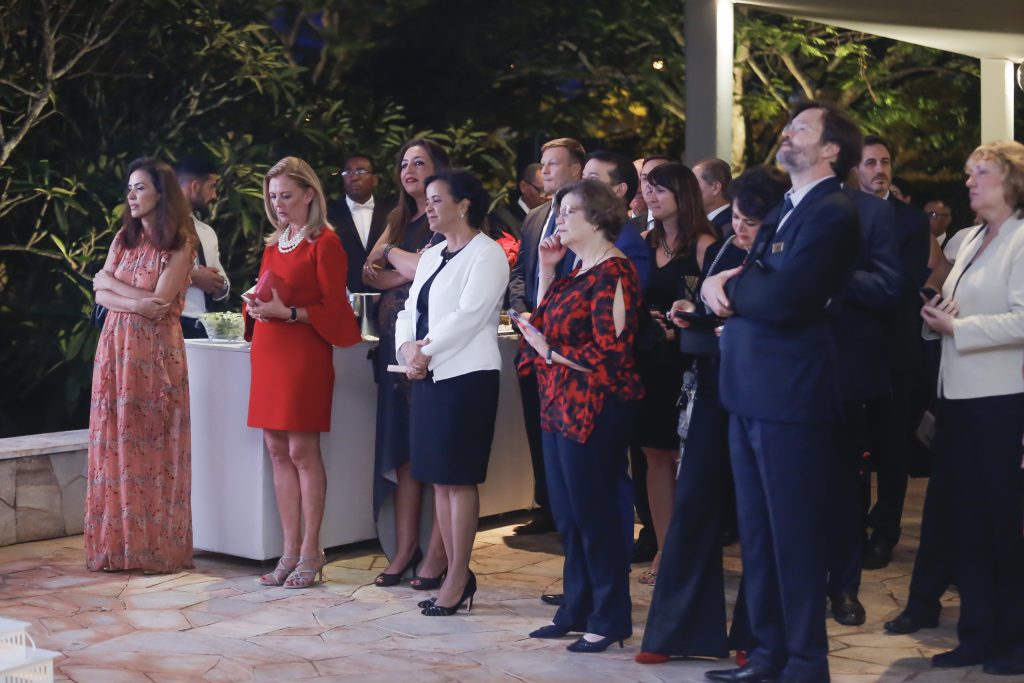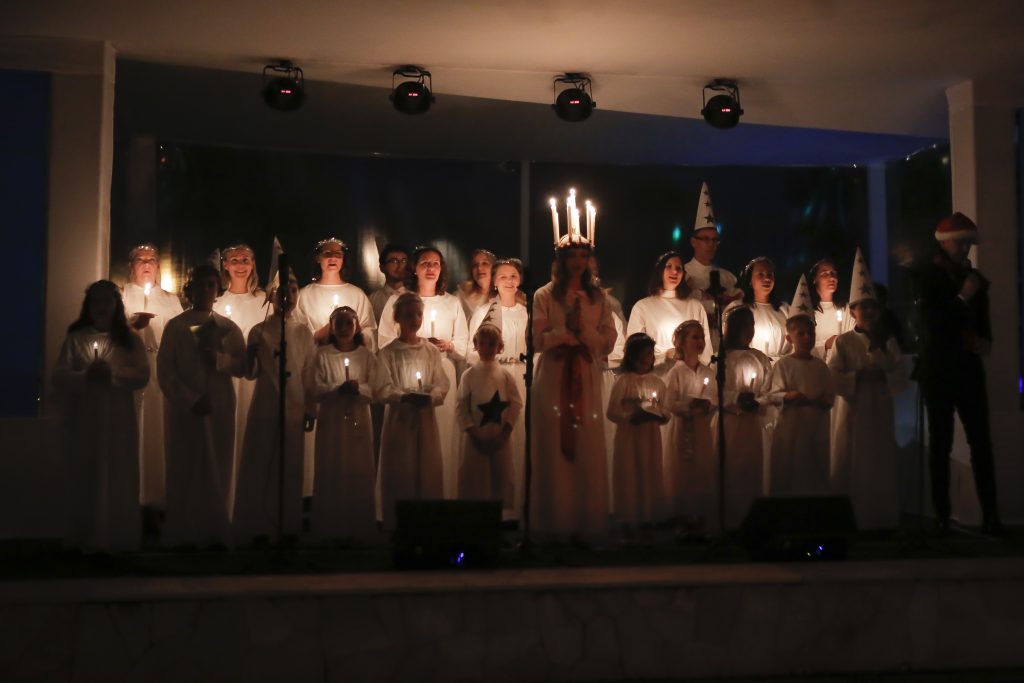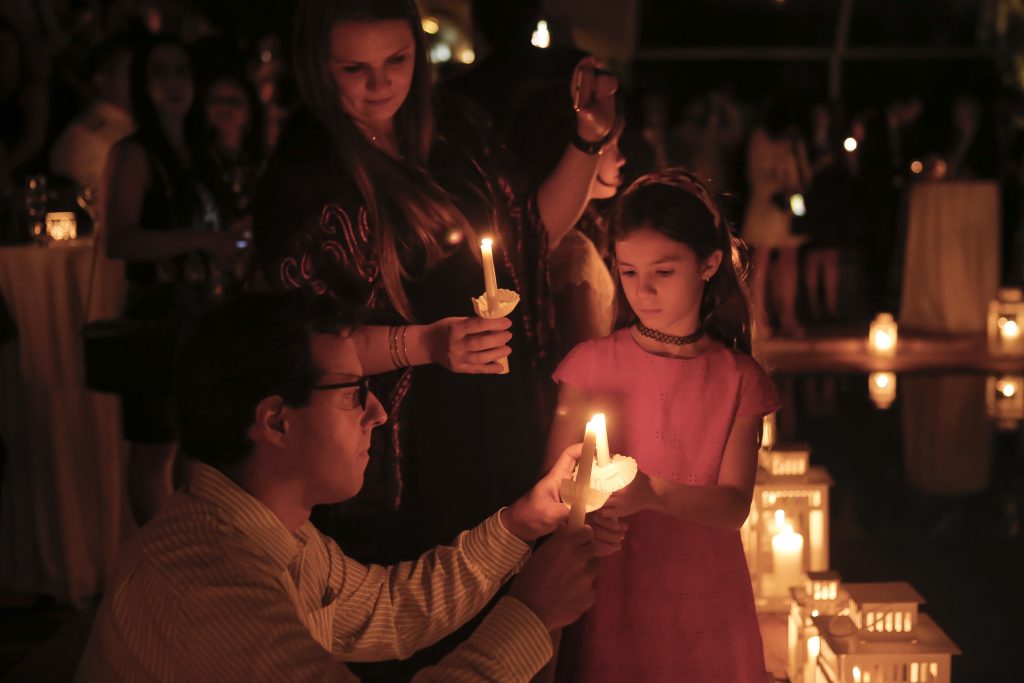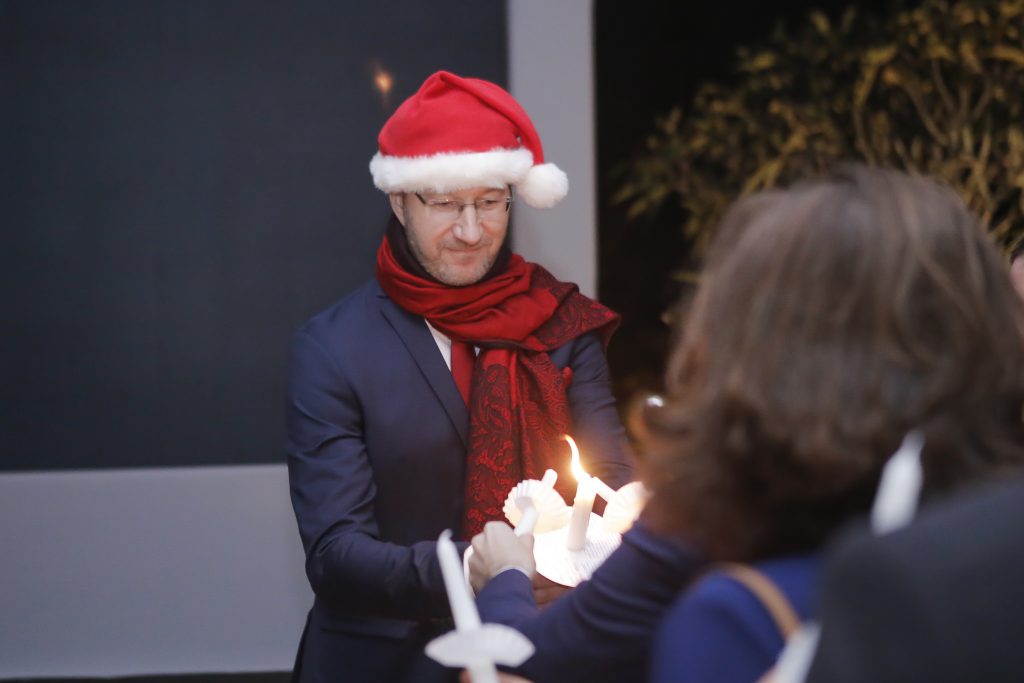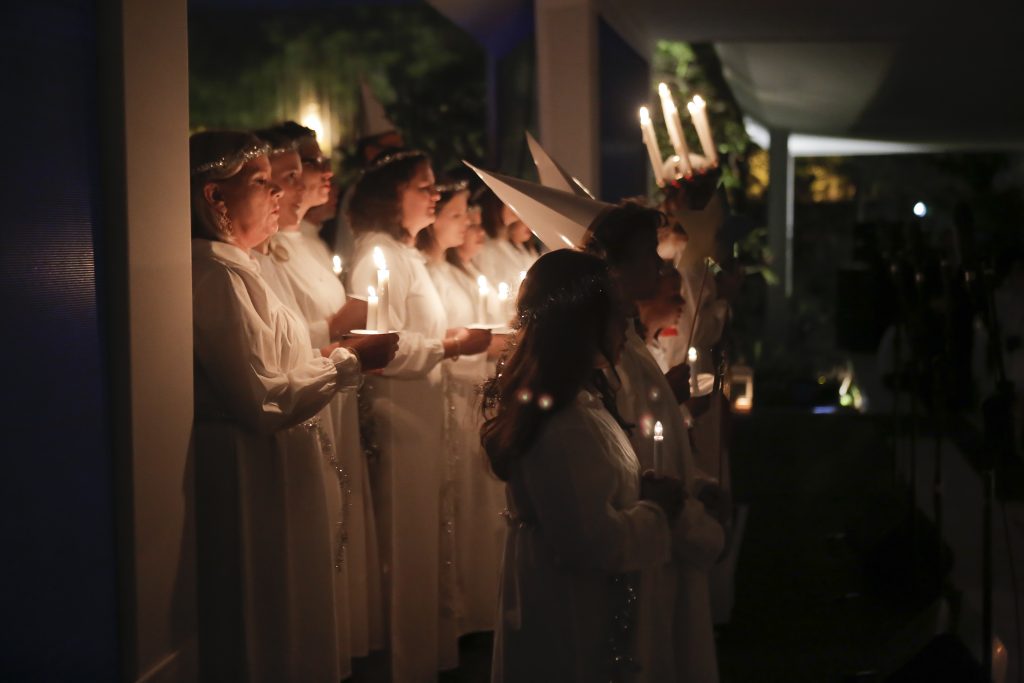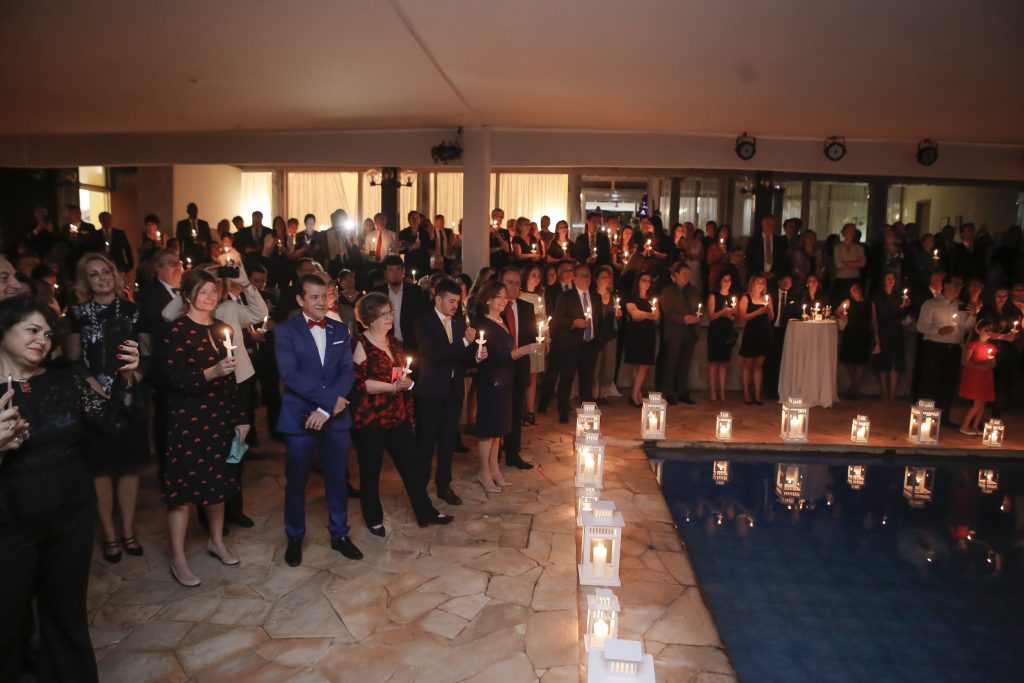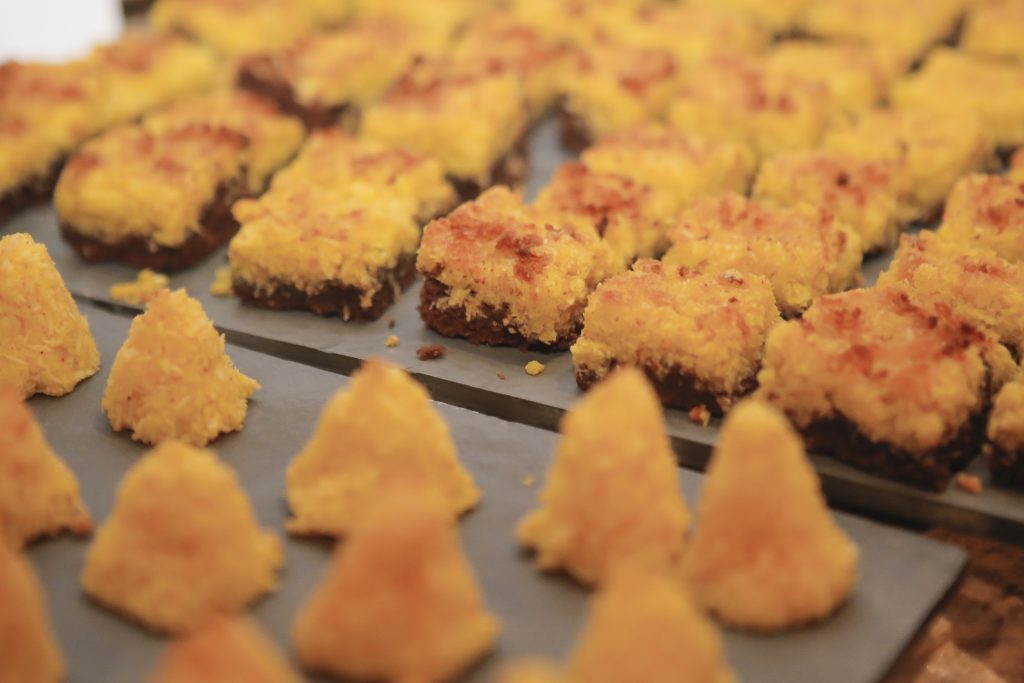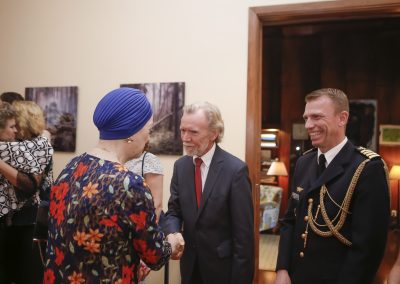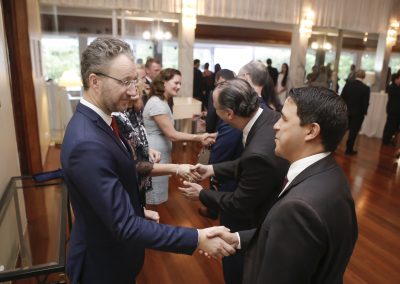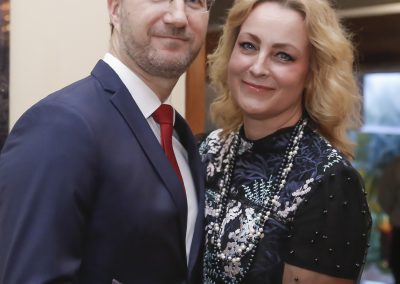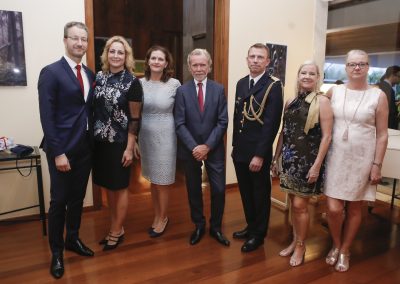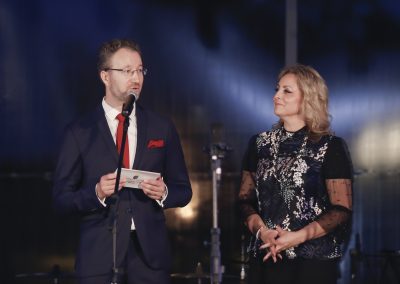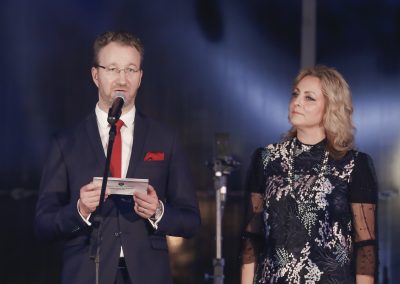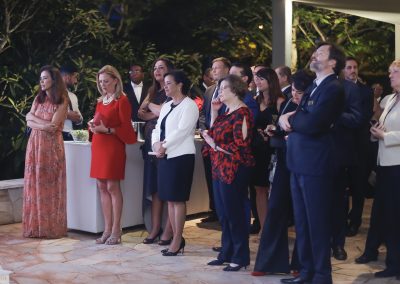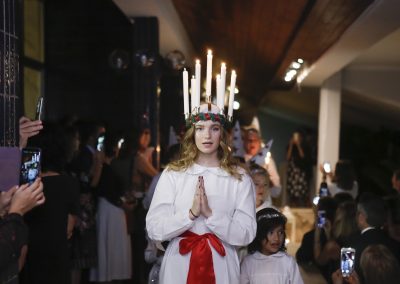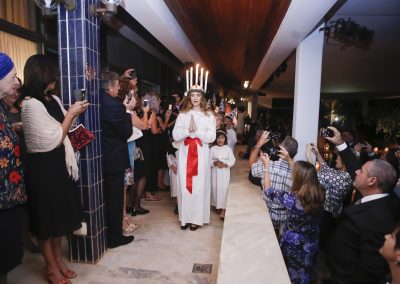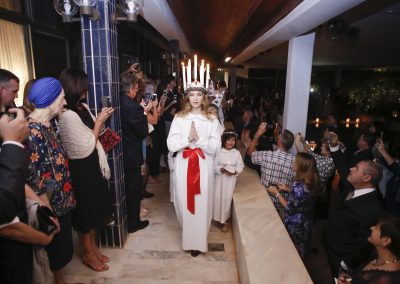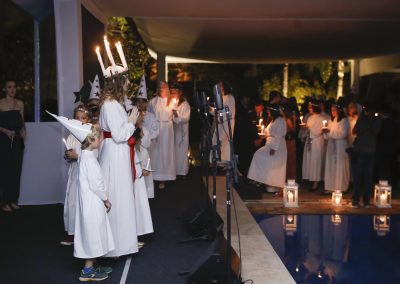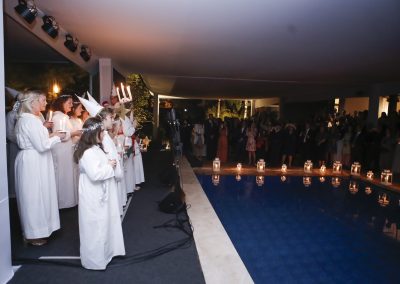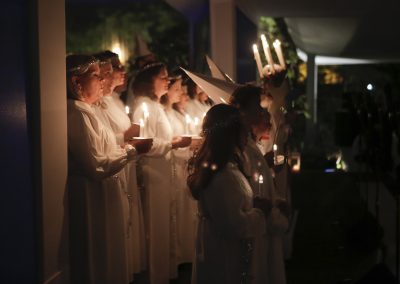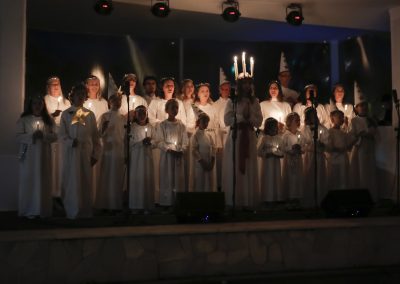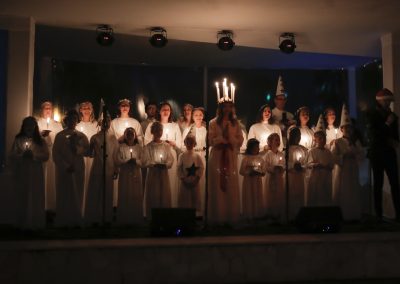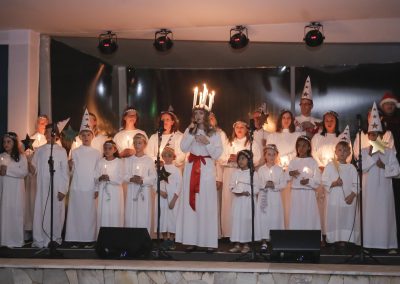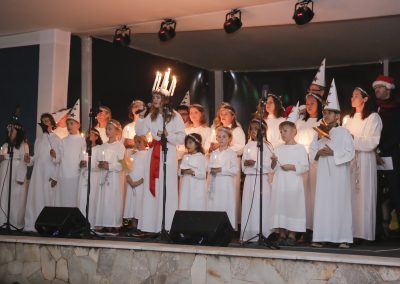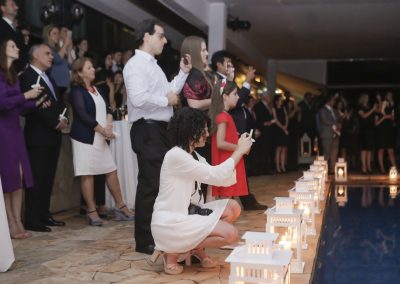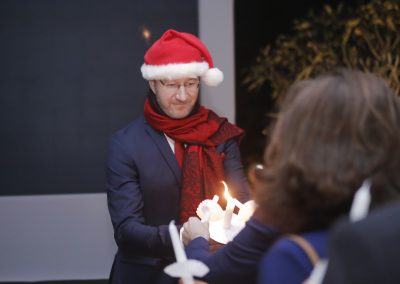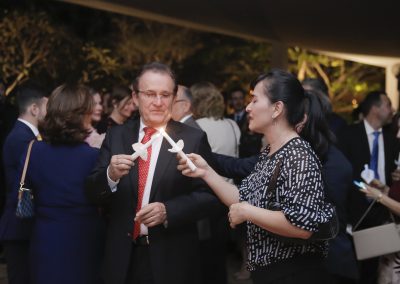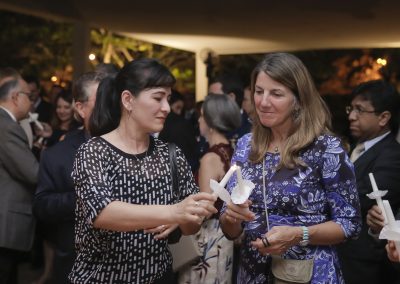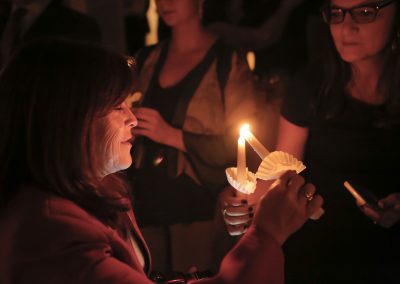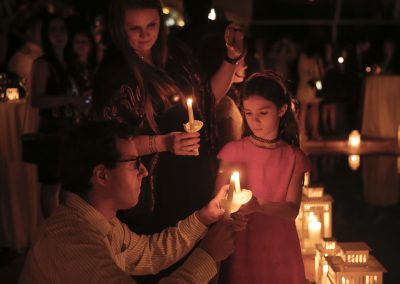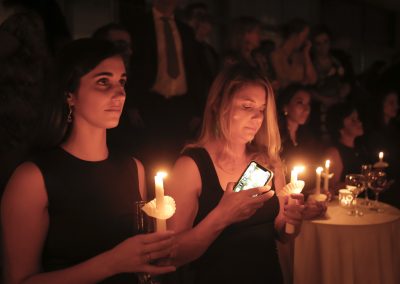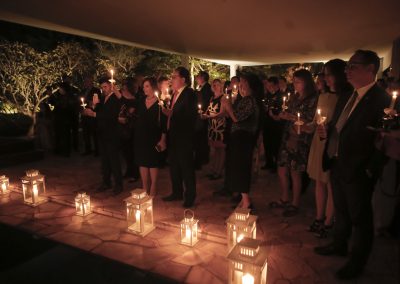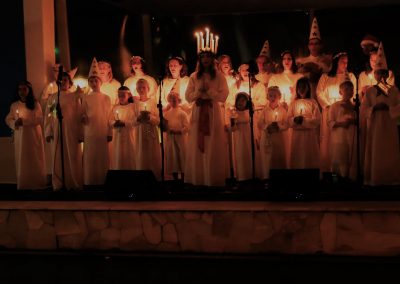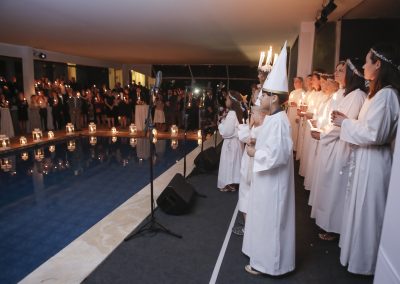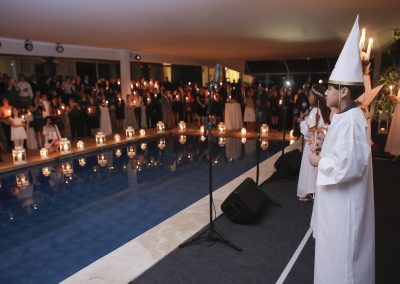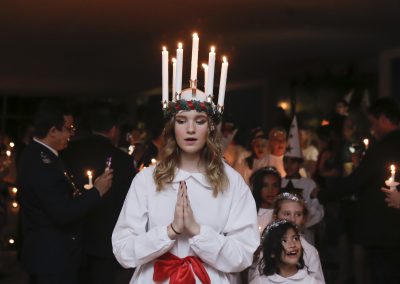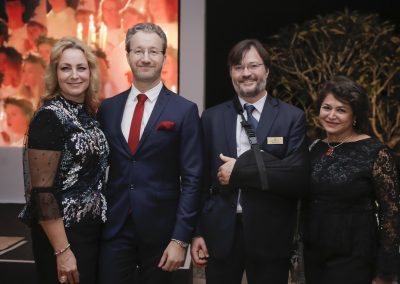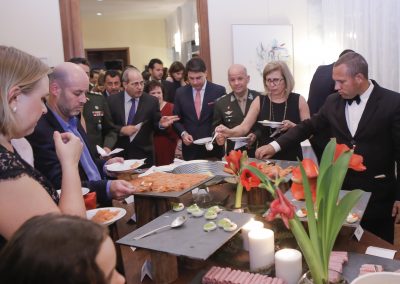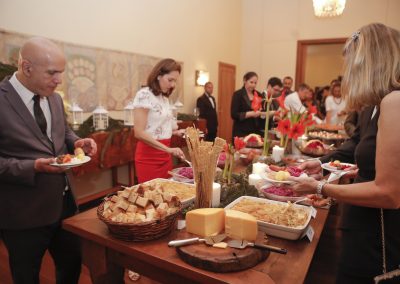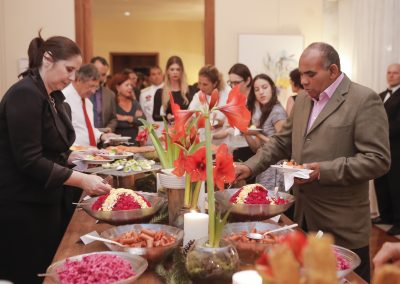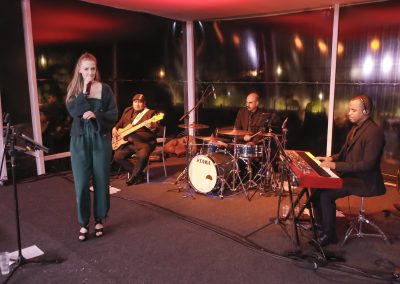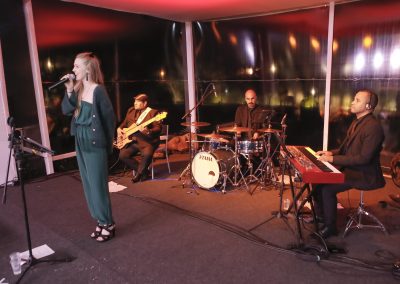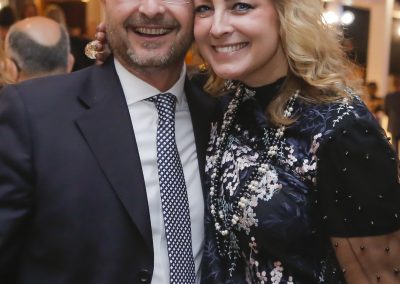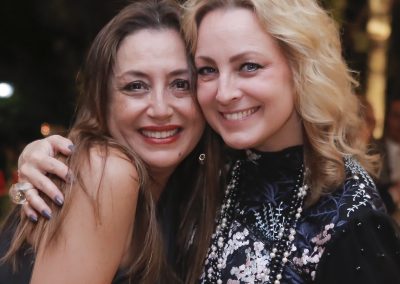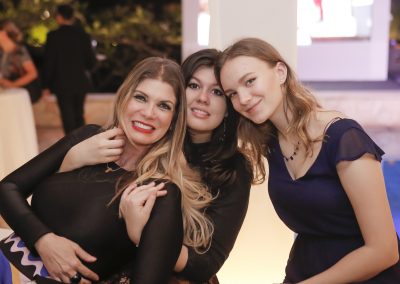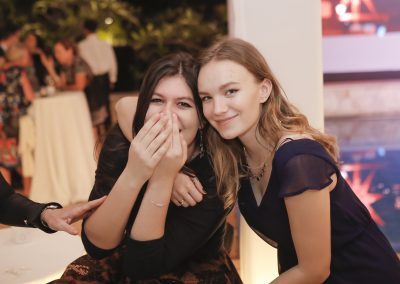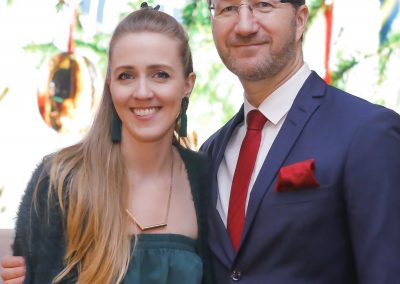On the night of December 13th, the Ambassador of Sweden to Brazil, Per-Arne Hjelmborn, received members of the diplomatic community and Brazilian guests for the celebration of Sankta Lucia, one of the most important Swedish Christmas traditions.
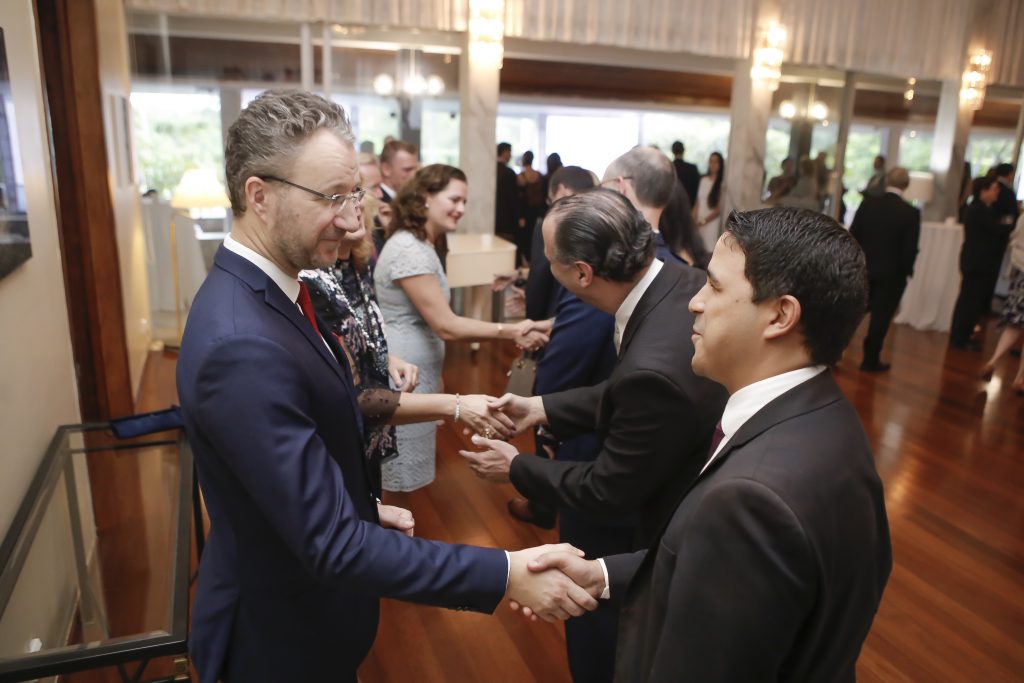
The ambassador Per-Arne Hjelmborg welcomed the guests along with diplomats and military attachés of the embassy of Sweden
The event presented the traditional procession and the choir of Sankta Lucia. The evening featured also a performance by Swedish singer Kajsa Beijer and a reception with culinary delights from Sweden. In addition to herring and potato dishes, guests could enjoy Glögg (hot wine), Lusselbullar (saffron buns), Pepparkakor and Kryddkakor (two types of crunchy biscuits).
In his welcome speech to the guests Ambassador Hjelmborn explained the cultural importance of the celebration of Luciadag and the satisfaction of being able to do the event exactly on the date of the Swedish celebration, made in the past on the longest night of the year that was December 13th. In 1753, when the Gregorian calendar was adopted, the longest night of the year became the night between December 21 and 22. However, for the people December 13 continued to symbolize the longest night of the year, so the importance of making the celebration on this date.
According to the tradition of the Catholic Church, Saint Lucia of Siracusa was an Italian girl who lived in Sicily and died around the year 304. According to one of the many legends associated with her life, she brought food to Christians who suffered persecution from the Roman authorities and who lived in catacombs. However, in order for her to carry the food with both hands and at the same time find her way through the darkness, Lucia created a crown of candles to be worn over her head to illuminate her direction.
Although Luciadag was celebrated in Sweden since the 18th century (the first recorded apparition of a white-clad Lucia with a candle wreath was in 1764), it was only over time that Sankta Lucia became a figure of Swedish folklore and without connection with religion. In the Nordic tradition, in addition to illuminating one of the darkest, longest and coolest nights of the year with her crown of candles, she leads a coral of elves, gingerbread dolls and other folk figures.
On Sankta Lucia Day it is common to see throughout Sweden several processions and choirs. On these events, the girl who represents Lucia wears a white robe with red ribbon at the waist and, symbolizing the appearance of light in the darkness, the aforementioned crown of candles. The other girls wear the same dress and a flowers crown, while the boys are called stars and wear a simple white robe and a cone-shaped hat. Usually accompanied by more people, these groups go to schools, hospitals, shops and other places singing music on Sankta Lucia and distributing saffron buns (Lussekatter) and gingerbread cookies (Pepakakkor).
THE GUIDE congratulates the Embassy of Sweden for the beautiful celebration of Sankta Lucia Day!
THE GUIDE informs that for free coverage of diplomatic events, the invitations should be sent to:
Mr. Pedro Paulo Moreira
President Director
THE GUIDE Business Consultancy
SHIS QI 09, Bloco A, Sala 101
Lago Sul
Brasília, DF, 71625-171
Or to the e-mail pedro@theguide.com.br



